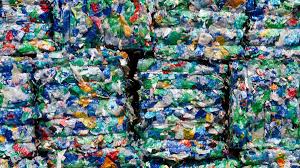
Key Technologies Driving PET Recycling Forward
Polyethylene terephthalate(also known as PET is one of the most widely used plastics in the world and is commonly used in items such as water bottles, soft containers for drinks, and food packaging. While PET is highly regarded for its durability and recyclability and its effectiveness, PET recycling is essential to reduce environmental impact and promoting sustainability.
Understanding PET
PET Recycling is a form of thermoplastic polymer which is lightweight, strong and impervious to moisture. It is employed in many different applications because of its clarity, strong strength-to-weight ratio and capability to be moulded into various shapes. But the environmental issue stems from its fact PET can take up to 45 years to decay in a landfill, which makes recycling a vital method.
The PET Recycling Process
Recycling PET requires a number of key steps to ensure that the plastic will be recycled and reused in a sustainable manner:
Collection and Sorting: The recycling process starts with the collection of PET containers and bottles. Then, these items are sorted against other plastics and other contaminants. Sorting can be done manually or using advanced technology like optical scanners.
Cleaning and Shredding: After being sorting, the PET objects are cleaned and sanitized to get rid of labels and residues as well as other impurities. After cleaning, the material is shredded into small flakes or pellets. This process is vital for ensuring that the recycled material is free of any contaminants that can affect its quality.
Processing and Pelletizing Processing and Pelletizing PET is later processed, usually using a process known as extrusion, in which it is melts and then formed into tiny pellets. These pellets can then be utilized to make new PET products, or mixed with other materials in order to create composite products.
Making New Products: The repurposed PET pellets are used to produce new products, which range from PET bottles to clothing fibers, carpeting and auto parts. This step closes the loop within the process of recycling, turning the old PET items into useful new products.
Benefits of PET Recycling
Recycling PET provides many environmental benefits. It helps reduce the need for new materials, preserving natural resources while decreasing the use of energy. Additionally, recycling helps to reduce greenhouse gas emissions and the amount of waste that is disposed into landfills. Through recycling PET, we also reduce the environmental impact that comes with the creation as well as disposal.
Challenges and Future Directions
Despite its many benefits, PET recycling faces challenges including pollution, a lack of infrastructure and low consumer participation. However, advances in recycling technology and increased awareness are helping tackle these issues. Innovative technologies like chemical recycling, which breaks down PET into its original monomers for reuse, offer promising solutions to improve recycling efficiency.
Conclusion
PET recycling is an important method of promoting sustainable practices and decreasing the environmental carbon footprint caused by plastics. Through understanding and taking part in the recycling process, individuals and communities can make a difference in a sustainable future by ensuring it is that PET remains a viable resource instead of a perpetual environmental problem.